skip to main |
skip to sidebar
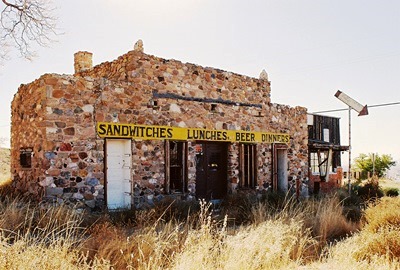
Organ, New Mexico isn’t really a ghost town these days, but I’m gonna make it look like one. Sorry, good people of Organ. I’ll explain in a minute.
Organ is named for the razor-spired Organ Mountains visible to the south, which were themselves named because they look like the pipes of…an organ. After being a mining encampment from the 1840’s, the town was officially founded in 1883 as lead, copper, fluorite, zinc, gold, and silver mines were punched into the hill slopes to the northeast with ever-increasing frequency. By the turn of the century, Organ was peaking at about 1,800 residents, seven saloons, two smelters, two general stores, a two-teacher school, a Catholic church, a post office, a hotel, and a jail in a tunnel that had once been a powder magazine.
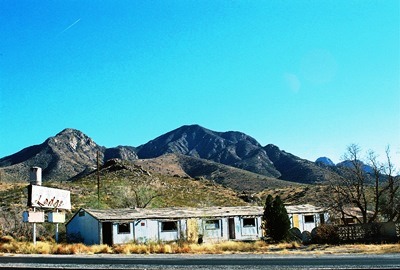
It seems strange that Organ was not called San Augustin, in honor of the San Augustin Mountains immediately to the northeast, or 7,030-foot San Augustin Peak, which literally towers over the town to the east, or even San Augustin Pass, now part of US Highway 70/82, which, if traveled eastward, will take you down onto a vast plain and the southern extent of the White Sands Missile Range. But, in 1908, long before US 70/82 was named, it was on this same stretch of road, traveling southwestward toward Las Cruces, that Pat Garrett was shot and killed some 28 years after he'd shot Billy the Kid in Fort Sumner, New Mexico. This bit of Organ’s history has remained long after its mines, which filled with water in the 1930’s, have mostly faded from memory.
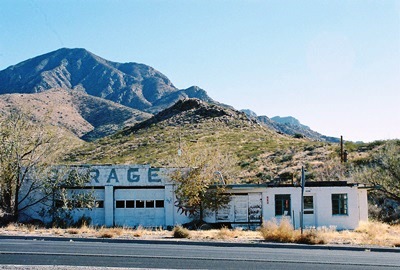
Because Organ is the closest inhabited place to White Sands Missile Range, it was revived somewhat in the mid-1940’s when work began on the atomic bomb and missile range employees moved-in. Thus, while the population is still only just over 300, there are many well-kept homes and what looks like it would be a very quaint and tasty Thai restaurant. Too bad it was closed during our visit. Philip Varney mentions Bentley’s Store and Assay Office in New Mexico’s Best Ghost Towns and notes that it had become a private residence. This is still true and, in fact, the old building looks to be very well-maintained with lots of tended greenery out front. Varney also mentions the Organ School, notable for its corner bell tower, but I couldn’t find it. I think the tower has been removed and the school probably now just blends in with its older neighbors.
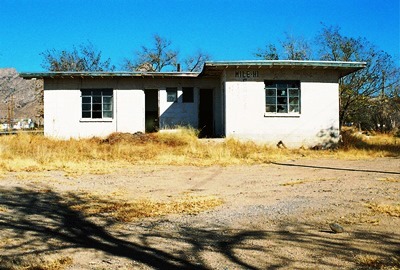
So, you may ask, if there are a few hundred people living in Organ, renovating their historic homes and eating Thai food, why all these photos of derelict buildings? Well, these pictures were taken on the south side of the highway. Those are the Organ Mountains in the background of a couple. As to WHY virtually every commercial enterprise on that side of the road has been abandoned—and apparently long-abandoned—I can’t say. Perhaps people prefer to eat and shop in Las Cruces, 15 miles away. That’s really the only other city in the area, but as New Mexico’s second-largest it would offer some retail competition. Whatever the case, I find it surprising that the spectacular views of the Organ Mountains to the south, San Augustin Peak to the east and Las Cruces to the southwest haven’t had more people stopping for sandwitches. I know I’d stop for a bite.
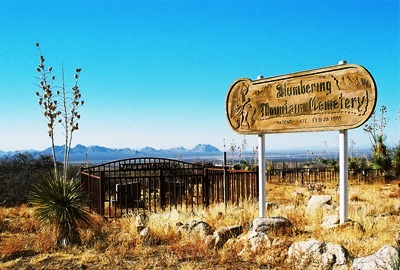
Next time we’ll go deep into the Organ Mountains themselves and visit Dripping Springs. But first I need to figure out how to make my crummy photos more presentable. Oh, and the photo above is the only shot from the north side of the highway. In the distance are the Doña Ana Mountains and the northern edge of Las Cruces, beyond which lies the Jornada del Muerto ("Journey of Death"), a waterless, 90-mile stretch of El Camino Real. Sounds like fun, huh?
For more information on Organ, consult ghostowns.com,
Wikipedia and, of course, New Mexico’s Best Ghost Towns.
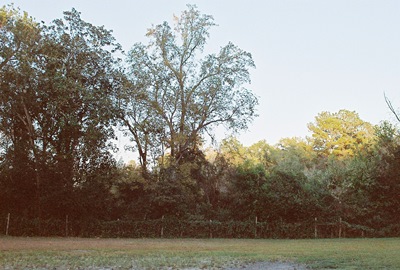
Some ruins draw us in because of what’s left behind, even if we don’t know who was there or what they did. Other times, we may know a little history, making what remains all the more evocative. Then there are those locations where the passage of time has obliterated all evidence and no visible clue to the past remains, even if that past was beautiful and transcendent night after night after night. Such is the case with a small patch of lawn in South Carolina which now contains only a shallow pond and abuts a scraggly woods.
Not far from the Savannah River, on Carolina Springs Road, near Highway 1, you may hear ecstatic ghosts if you listen hard enough. Here stood Palmetto Park and Pond, a two-story, thousand-capacity dance hall and adjacent concrete-lined swimming pool for cooling off before sets, once a major stop on the “Chitlin’ Circuit.” Featuring the very best of African-American entertainment from May 12, 1932 until a final Christmas dance in 1941 (just weeks after Pearl Harbor), the list of musicians that graced its stage makes your head spin. Check a few of these dates:
June 7, 1940: Ella Fitzgerald & her orchestra.
April 20, 1941: Jimmie Lunceford & his orchestra.
May 5, 1941: Ella Fitzgerald & her orchestra.
May 21, 1941: Cab Calloway & his Cotton Club Orchestra.
Aug. 4, 1941: Lil Green with Tiny Bradshaw & orchestra.
Sept. 19, 1941: Louis Armstrong & his band with vocalist Ann Baker.
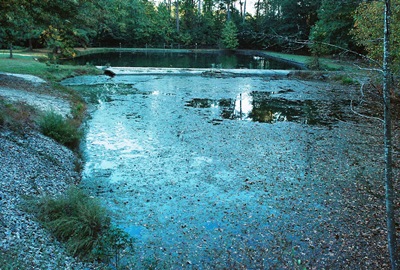
Also known to have played at Palmetto Park and Pond were King Joe Oliver, Dizzy Gillespie, "Queen of Swing" Edith Curry and her orchestra, Maxine Sullivan ("the Loch Lomond Lassie"), Graham Jackson (an accordionist pictured in Life Magazine weeping as he played “Going Home” while FDR’s body left Warm Springs, GA) and his Seminole Syncopators, Erskine Hawkins and his orchestra, Smiling Billy Seward and his Celery City Serenaders, “Queen of Jazz” Blanche Calloway, Speed Webb and the Hollywood Blue Devils, “The Sensational Harlem Playboy” Willie Bryant, Mitchell “Kid” Harris, Banjo Bernie, Hosea Sapp and his Swing Kings, Desmore and the Rhythm Kings, Al Cutter and his Twelve Knives Band, Zack Whyte, Floyd Ray with Joe Alexander ("Harlem's Bing Crosby") and Eddie Brown (“The World's Greatest Drumming Man”), Clarence Love Orchestra, Wilson's Swing Band, Clarence Moultrie, and Earl “Fatha” Hines, amongst many, many others on countless bills now lost to the ages. Below is a shot of Palmetto Park and Pond in its 1930’s heyday.
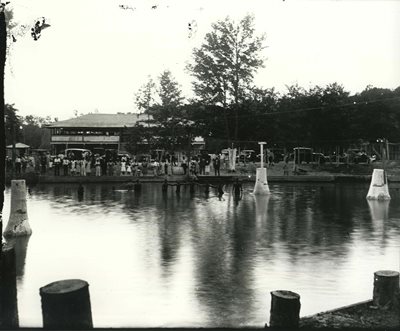
We should make a special note of Hamburg, South Carolina-born singer Arthur Lee Simpkins, known as the "Black Caruso," and his Nite Hawks, who, of course, frequented Palmetto Park. With a range from C to F above high C, Arthur Lee sang at the 1964 memorial for soul legend Sam Cooke, whose "A Change is Gonna Come" still knocks me out every time.
Before becoming Palmetto Park and Pond, the site hosted church gatherings. A black social club known as the Dragons began having swing concerts in 1932, which led Duke Lamback, a local BBQ restaurant owner, and Joe Minnick to up the ante considerably in terms of booking (and BBQ, too, apparently). Soon the bills became so awesome that free buses ran from the corner of Laney-Walker and what is now James Brown Boulevard to bring folks over the river from Augusta. Finally, something very rare and special for the time happened: White people began to attend the concerts, were welcomed and, by all accounts, everyone got along just fine. Granted, seating was still segregated, but, at the height of Jim Crow, this clear example of the power of music to break down prejudices should be remembered.
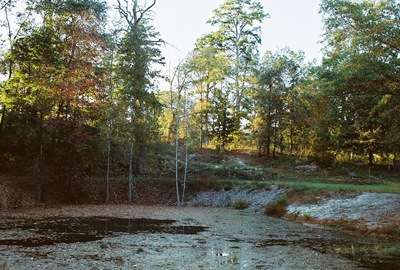
WWII, however, ruined the fun and, with so many men of all races being drafted, Palmetto Park closed and the land was sold. The pond struggled on for awhile after the war as a local swimming hole. Then, for many years, a trailer park was on the site until it became more trouble than it was worth. Now, all is quiet. But, if you listen close, you might still hear that trumpet blow.
If you do a Google search for Palmetto Park and Pond, virtually all roads will lead back to Don Rhodes, who has single-handedly resurrected the memory of this once-grand venue. In fact, through the exhibits committee of the North Augusta Arts and Heritage Center, and with the help of the committee’s chairman, Milledge Murray, and the center’s director, Lauren Virgo, he helped assemble an exhibit in its memory in North Augusta’s Municipal Building. The exhibit in large part can still be seen today at the Aiken (S.C.) Museum of History. So, pretty much everything here comes from Don one way or another and I thank him for telling me about Palmetto Park and then bringing me out there for a visit. I swear you can still feel the energy of the place. Thanks also to the current property owner for not calling the cops on us before Don could introduce himself. The owner provided some excellent history, including pointing out just where the bandstand had been. (It would’ve stood right where the trees are behind the chain link fence in the photo at top and below).
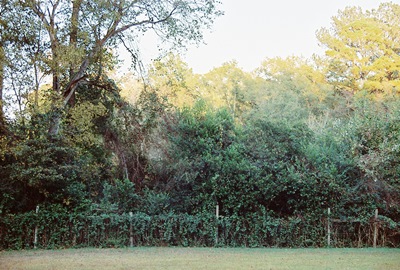
You can read more about Palmetto Park and Pond HERE. If you’d like to read about Arthur Lee Simpkins at Palmetto Park, check out this BOOK by Tom Mack. And if you know anything at all about Palmetto Park and Pond, please leave a comment!
That’s it for now. The next post will have us leaving my former home in the Central Savannah River Area and returning to my current home of New Mexico, where we’ll head south to a little town nestled beside the Organ Mountains.

Back in late 2004, I wrote a post titled “Honky Tonk Hell” about an abandoned Christian mission located on the site of the lost town of Hamburg, South Carolina. The “hell” of the title was in reference to this particular building being the creepiest place I’d explored to that time. All these years later, it has yet to be topped. I’ve been in lots of physically disturbing places, but not many that I’d characterize as psychically disturbing. The “honky tonk” was in reference to a rumor I’d heard that the mission stood where an old club used to be. I still think the pictures and stories accompanying that original post match the title pretty well.
A short time later, the very first comment on that post (left anonymously, naturally) not only re-stated the rumor that a club had once been there, but added that it had been built in the 1950s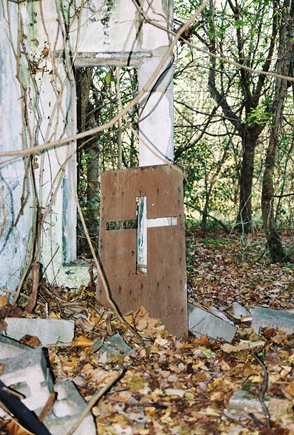 for the hundreds of workers being brought in to construct the nearby Savannah River Site, a Cold War-era nuclear facility. As if that wasn’t enough, word was that the woman with multiple personality disorder portrayed by Joanne Woodward in Three Faces of Eve used to dance at this place. Three Faces of Eve, fittingly enough, opened at the Miller Theater, across the river in Augusta, in 1957. Without any way to verify this information, I could only hope it was all true.
for the hundreds of workers being brought in to construct the nearby Savannah River Site, a Cold War-era nuclear facility. As if that wasn’t enough, word was that the woman with multiple personality disorder portrayed by Joanne Woodward in Three Faces of Eve used to dance at this place. Three Faces of Eve, fittingly enough, opened at the Miller Theater, across the river in Augusta, in 1957. Without any way to verify this information, I could only hope it was all true.
Flash forward to last fall and some conversations I had with Ramblin’ Don Rhodes, columnist for the Augusta Chronicle and historian par excellence, who finally confirmed that the cinder block mission had indeed been built on the site of a concrete and wood club, which burned in August 1957, the month before Three Faces of Eve premiered. He reckoned that the existing concrete slab might even be the same one the club had stood on. Even better, he knew the name of the place: Club Royal. It was once among the most popular clubs in the region and considered one of the nicest in the South. As if that wasn’t enough, he’d interviewed Eve, whose real name is Christine Sizemore Costner, and heard a bit firsthand about Club Royal.
In the book on which the movie is based, Eve is said to have three distinct personalities. There’s Jane, her relatively stable personality, Eve White, the “good girl,” and Eve Black, the “party girl.” I’ll let you guess which one danced (and even sang) at Club Royal. In the film, there is a scene that takes place at what would have been Club Royal where Eve is dancing for soldiers from then-Camp Gordon. In Don’s interview with Mrs. Sizemore, she said of Club Royal that, “It was huge, and it was nice. I was surprised they let me sing there. Eve Black, though, had a nice voice. What I find interesting is that I can’t carry a tune in a bucket, but she sang so well. And, if she just appeared there as a guest, they would ask her to sing. She loved it, you know.” Interesting, indeed.
I’ll let you guess which one danced (and even sang) at Club Royal. In the film, there is a scene that takes place at what would have been Club Royal where Eve is dancing for soldiers from then-Camp Gordon. In Don’s interview with Mrs. Sizemore, she said of Club Royal that, “It was huge, and it was nice. I was surprised they let me sing there. Eve Black, though, had a nice voice. What I find interesting is that I can’t carry a tune in a bucket, but she sang so well. And, if she just appeared there as a guest, they would ask her to sing. She loved it, you know.” Interesting, indeed.
This is just the kind of thing we love to get into here at City of Dust. Try Googling “Club Royal” and “North Augusta” or “South Carolina.” You will get no pertinent hits beyond a chapter written by Don for his book, “Mysteries and Legends of Georgia: True Stories of the Unsolved and Unexplained.” Club Royal has nearly sunk entirely into the mists of time.
Nearly, that is, but not entirely. In the last eight years, nature has reclaimed much of the mission. The dolls and women’s clothes that used to litter the floors have somehow disappeared. The roof has totally caved-in. The moldy piles of magazines, some dated from the mid-1950s, before Club Royal was destroyed, have vanished. The tractor trailers out back, once filled with final donations, have burned completely. In short, the place is no longer creepy at all. But I could at least stand on that concrete slab and imagine Eve Black belting it out for the soldiers.
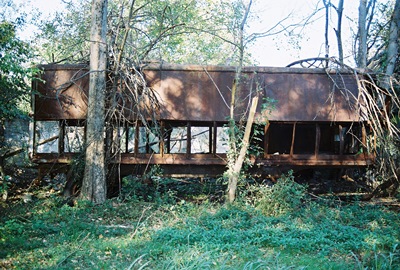
And I learned something else. Facing the mission while taking the photo above had me standing right in the middle of what had once been Market Street, the main street of Hamburg, and the very place where the Hamburg Massacre of 1876 started.
The spooky mission is returning to nature. Once afraid of being stigmatized for her illness, Christine Sizemore Costner has recovered completely, written a couple books, and is now living happily in Florida. The seven victims of the Hamburg Massacre, emblems of the bloodshed and terror that Reconstruction brought to African-Americans, are long dead and almost forgotten (but, again, not entirely). So, you tell me which of the stories surrounding this little patch of ground by the Savannah River is the creepier.
Many thanks to Don Rhodes for sharing what he knows about Club Royal and for his excellent interview with the former Eve. I highly recommend his book. Thanks also to Peter Hughes for recreating some of old Hamburg for me. If anybody out there has stories from Club Royal, I beg you to please send them in!
I leave you with THIS rather apropos musical outro courtesy of Webb Wilder.











 for the hundreds of workers being brought in to construct the nearby Savannah River Site, a Cold War-era nuclear facility. As if that wasn’t enough, word was that the woman with multiple personality disorder portrayed by Joanne Woodward in Three Faces of Eve used to dance at this place. Three Faces of Eve, fittingly enough, opened at the
for the hundreds of workers being brought in to construct the nearby Savannah River Site, a Cold War-era nuclear facility. As if that wasn’t enough, word was that the woman with multiple personality disorder portrayed by Joanne Woodward in Three Faces of Eve used to dance at this place. Three Faces of Eve, fittingly enough, opened at the  I’ll let you guess which one danced (and even sang) at Club Royal. In the film, there is a scene that takes place at what would have been Club Royal where Eve is dancing for soldiers from then-Camp Gordon. In Don’s interview with Mrs. Sizemore, she said of Club Royal that, “It was huge, and it was nice. I was surprised they let me sing there. Eve Black, though, had a nice voice. What I find interesting is that I can’t carry a tune in a bucket, but she sang so well. And, if she just appeared there as a guest, they would ask her to sing. She loved it, you know.” Interesting, indeed.
I’ll let you guess which one danced (and even sang) at Club Royal. In the film, there is a scene that takes place at what would have been Club Royal where Eve is dancing for soldiers from then-Camp Gordon. In Don’s interview with Mrs. Sizemore, she said of Club Royal that, “It was huge, and it was nice. I was surprised they let me sing there. Eve Black, though, had a nice voice. What I find interesting is that I can’t carry a tune in a bucket, but she sang so well. And, if she just appeared there as a guest, they would ask her to sing. She loved it, you know.” Interesting, indeed.